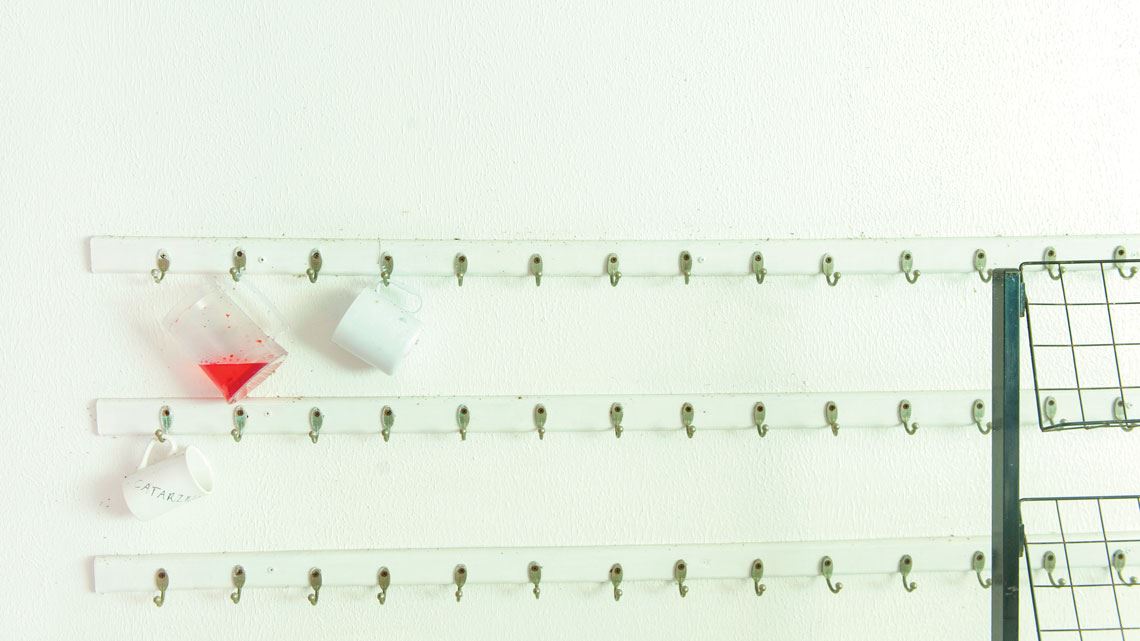The return to in-person classes in Brazilian schools is slated for early September in the state of São Paulo. It began with a debate framed by the experiences of societies that have already eased the social isolation measures they adopted to combat the spread of Sars-CoV-2, the virus that causes COVID-19. In a country marked by profound inequalities in learning conditions, the challenges include discussions—that are not always unanimous—about which age group should restart activities first, how educational content should be reorganized, and the best time to assess students’ knowledge. At the forefront of the debate on resumption protocols are such agencies as the National Education Council (CNE), the National Council of State Secretaries of Education (CONSED), and the National Union of Municipal Education Directors (UNDIME), in addition to civil society and research organizations, who defend the adoption of strategies that deal with the pandemic’s emotional impacts as a priority for reopening schools. In early July, the Ministry of Education (MEC) released biosafety guidelines for returning to in-person classes at federal educational institutions.
Globally, more than 1.4 billion children were not attending school in June, according to an editorial published in the July 1 issue of The Lancet Child and Adolescent Health. The article also states that 60% of school-age children didn’t have the resources to participate in distance-learning activities, a number that increases to 86% in countries with a Human Development Index (HDI) below 0.500. Although Brazil’s average HDI is 0.755, conditions vary widely by state or municipality, so while there are cities that have an HDI higher than 0.800, in others it is lower than 0.500. A survey by the United Nations Children’s Fund (UNICEF) shows that, even before the pandemic, poor children were five times more likely to go without basic education compared to children living under favorable socioeconomic conditions.
Planning the return to the physical classroom in the midst of the pandemic presents obstacles at various levels, chiefly the danger of increasing the spread of the new coronavirus. Researchers at the University of Granada (UGR), in Spain, performed calculations to estimate this risk working from the assumption that one Spanish family consists, on average, of two adults and 1.5 children, and that each classroom consists of 20 students. According to their model, on the first day of class, even if students’ face-to-face contacts were limited to family members and classmates, they would have been exposed to 74 people. On the second day that number would jump to 808 and, in three days, to 15,000. This increase would occur because by meeting with the other children and their teacher, each student would also indirectly come into contact with the people with whom these others have relationships, including connections that occur due to each sibling who attends a different classroom. In Spain, physical classroom activities are expected to resume in September, at the beginning of the European school year.
– Looking for shortcuts
– Saving time
– Standing alone
– Cristiana Toscano: An unprecedented global effort
– Science takes on the virus
– Calling all scientists
– Each nation’s effort
– Difficult exit
– The challenge of calculating R
– Amplified violence
From an educational perspective, the most urgent challenge is unequal access to learning content during the social isolation period. According to the United Nations Educational, Scientific, and Cultural Organization (UNESCO), 830 million children worldwide do not have computers. The problem affects even developed countries. An article published in June by Swiss researchers in the journal Educational Assessment, Evaluation, and Accountability shows that 78% of students in Germany, Austria, and Switzerland deem the unavailability of a computer, notebook, or tablet for studying represented the biggest obstacle to be overcome during school shutdowns. The survey, which interviewed 7,100 people and included students, family members, and school officials, also showed that the time devoted to studies varies widely. Eighteen percent of elementary school students who participated in the survey reported allocating up to two hours a day to school activities, which is considered low compared to the four hours or more per day that they usually spend at school.
In Brazil’s case, the basic education system—including students and professionals from public and private institutions—totals some 55 million people, according to data from the Brazilian Institute of Geography and Statistics (IBGE). Approximately 47 million of these are students, 38.7 million of whom were enrolled in public schools in 2019, according to the Anísio Teixeira Institute of Educational Studies and Research (INEP). “During the pandemic, about 25% of these students haven’t been reached by distance-learning technologies, be it classes taught through television, radio, or internet,” says Luiz Miguel Martins Garcia, president of UNDIME and Superintendent of Schools for the São Paulo municipality of Sud Mennucci. In his view, part of the problem involves the low percentage of the Brazilian population who can access the internet. According to the ICT Households survey conducted in 2019, only 67% of households in Brazil have access to the internet, and that percentage is lower among the least economically advantaged classes (see Pesquisa FAPESP issue no. 292).
In the same vein, Claudia Costin, executive director of the Center for Excellence and Innovation in Educational Policies at the Getulio Vargas Foundation in Rio de Janeiro, notes that in the 2020 edition of the International Student Assessment Program (PISA), Brazil placed second among 79 participating countries ranked by their levels of inequality. “The pandemic could deepen these inequalities even further,” warns Costin, who is a member of the Global Commission on the Future of Work at the International Labor Organization (ILO).
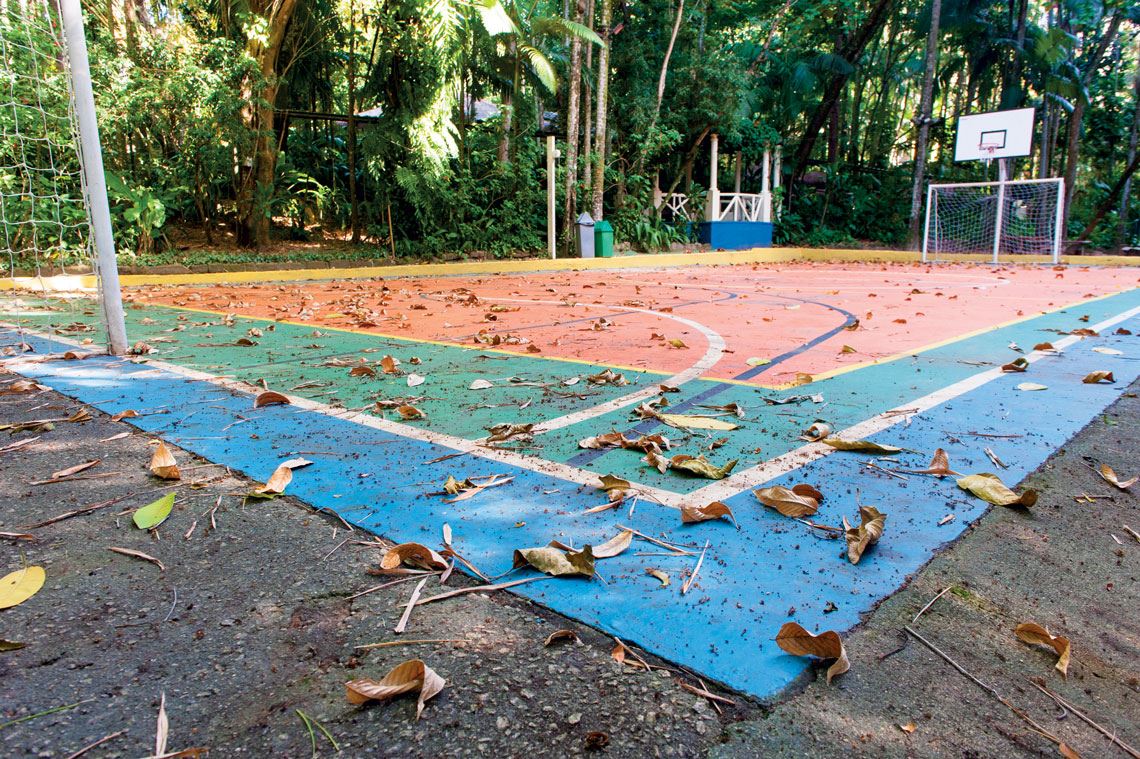
Léo Ramos Chaves
Institutions must reexamine physical spaces and create strategies to improve the use of outdoor areasLéo Ramos ChavesBefore the return
Adapting school attendance procedures, and new rules for cleaning school environs exemplify guidelines featured in health protocols at schools in European countries (see infographic). Considering these measures, CONSED has guided education departments to base their discussions regarding the resumption of classroom activities on analyses of the student capacities of their school systems, the conditions for adapting classroom space, and plans for rotating students in shifts.
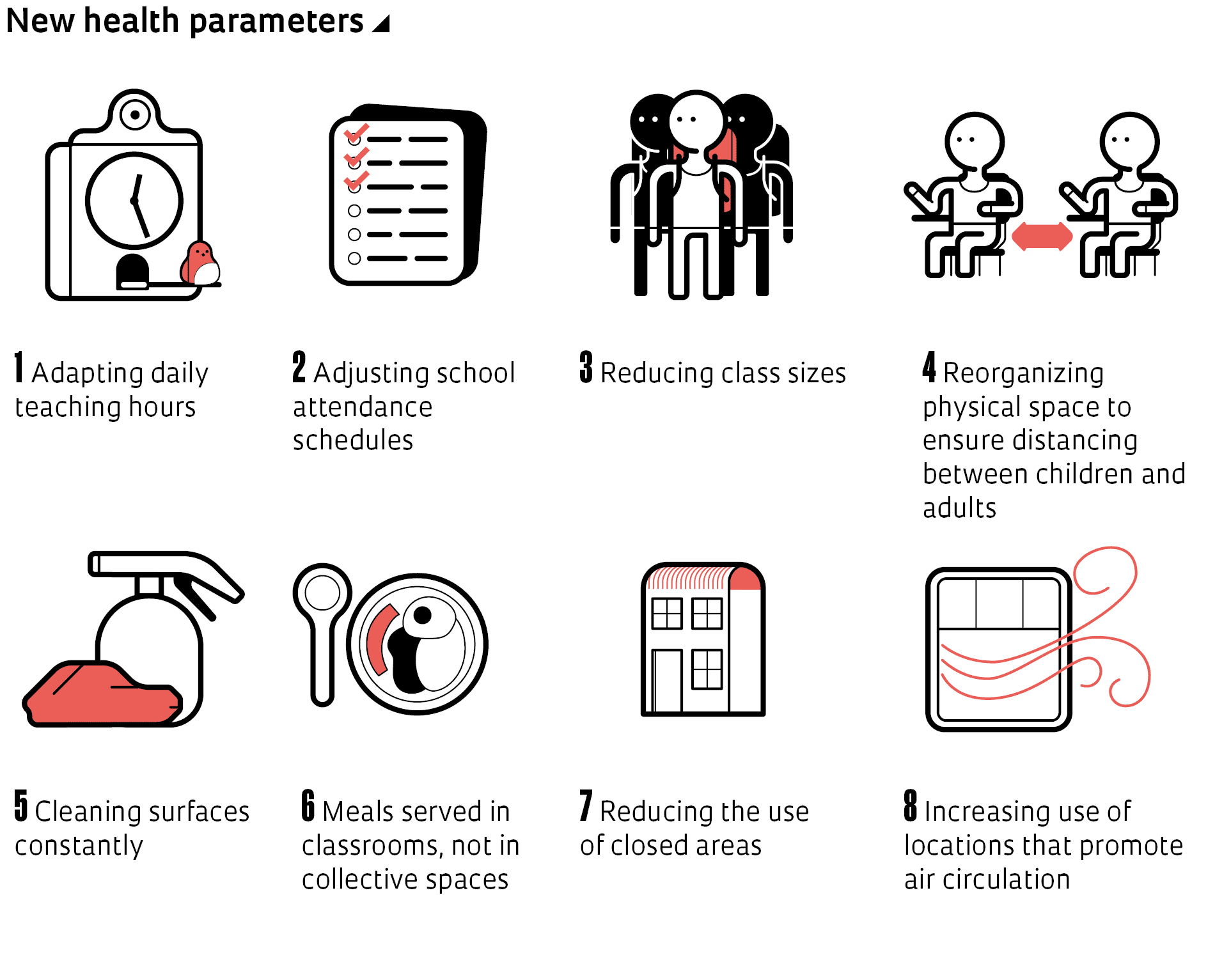
Despite the general guidelines coming from state and national education departments, Rita Coelho, coordinator of Childhood Education Assessment at the Center for Public Policy and Education Assessment of the School of Education at the Federal University of Juiz de Fora (CAED-UFJF), stresses that schools must create committees to adapt the protocols to their local conditions. “First of all, they have to identify at-risk students and teachers, establish rules for the use of personal protective equipment, and find external areas that can be used for teaching activities,” says Coelho, who coordinated Childhood Education at MEC [Ministry of Education] from 2007 to 2016. Additionally, determining new class sizes, which usually number around 30 students in elementary schools, and phasing in the resumption process are measures that can only be defined by the institutions themselves.
Bernardete Angelina Gatti, a researcher at the Carlos Chagas Foundation (FCC), also emphasizes that reopening schools requires extensive prior preparation work. Gatti, who has been conducting studies on teacher training and curriculum proposals since the 1970s, believes one of the starting points should be preparing teachers to work under the new conditions, keeping in mind not only the content to be taught, but their daily teaching routines as well. “Children will return hungry for personal contact and want to hug their friends. How can we ensure that they maintain safe distancing and follow hygiene rules without causing panic, while at the same time showing how important these attitudes are in the context of the pandemic?” she asks.
Another requirement for teacher training includes the need to prepare educators for the challenges of remote teaching. A survey conducted by the Península Institute from April 13 to May 14 interviewed 7,734 teachers from all over the country and concluded that 83% of them do not feel prepared to teach online classes. Garcia, at UNDIME, believes public schools need to develop distance learning methodologies and procedures that are effective in their particular circumstances. “Academic researchers can play a central role in this pursuit, analyzing how technology should be used to meet the requirements of school curricula,” he observes.
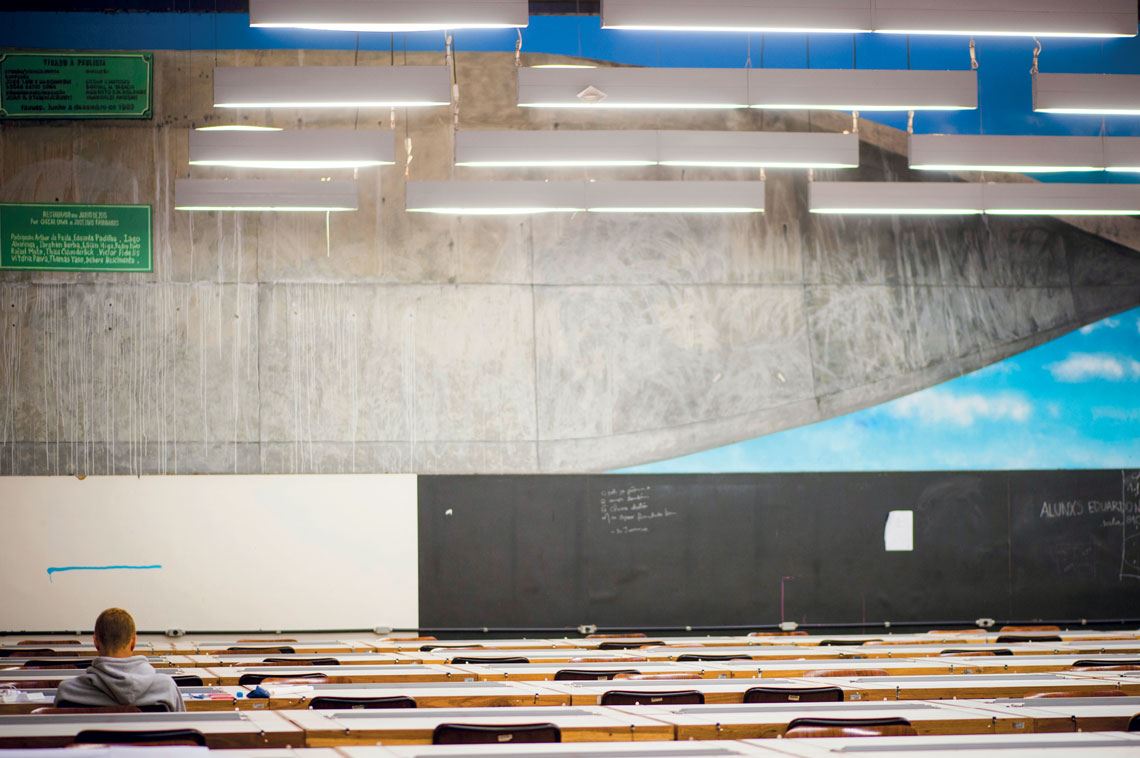
Léo Ramos Chaves
Classroom at the School of Architecture and Urbanism at USP: the university will not resume in-person classes until 2021Léo Ramos ChavesRegarding phased returns to classrooms, Costin notes that European countries adopted various strategies in returning to in-person classes. Germany, for example, started with teenagers, due to their greater ability to understand health rules and the urgency to complete their studies. Denmark prioritized children under 12 and France chose to restart activities with children aged 3 to 5 years. “Based on analyses of experiences internationally, the CNE argues that in Brazil the resumption should begin with preschool and younger gradeschool children,” notes sociologist Maria Helena Guimarães de Castro, a retired professor at the Institute of Philosophy and Human Sciences at the University of Campinas (IFCH-UNICAMP), and a member of the CNE. “In this age group, students do not have the autonomy to remain alone while their parents are at work, they have more difficulties in following online teaching activities, and are at lower risk from the coronavirus,” explains Castro, who was Executive Secretary of the Ministry of Education from 2016 to 2018.
Mozart Neves Ramos, who sits on the Sérgio Henrique Ferreira Chair at USP in Ribeirão Preto and is another member of the CNE, believes that the return to in-person activities should happen in stages, with each state deciding what percentage of students to return to the classroom, in accordance with local health conditions. He says that despite Provisional Measure 934, issued by the federal government in April, which exempted schools from the requirement of holding classes at least 200 days per year, it will be necessary to organize a make-up schedule for classes that includes the content planned for the period. To this purpose, public and private institutions will be able to extend their daily class hours, hold class on Saturdays, or offer after-hours activities. “In addition, the CNE argues that the 2020 academic year should extend through the first months of 2021, to cover content they’re still behind on, even after doing make-up activities,” says Ramos, who is a member of the FAPESP Board of Trustees, and was dean of the Federal University of Pernambuco (UFPE) from 1995 to 1999.
Carlota Boto, from the School of Education at the University of São Paulo (FE-USP), explains that during this process schools must establish realistic learning expectations, concentrating their efforts on delivering essential content that will serve as a basis for future learning. “We must rethink the curriculum so as not to overload students and, above all, we need to help them reflect on the new post-pandemic reality, in which our notion of civility is being recreated,” states Boto, who has been conducting research on the history of education since the late 1980s.
Ramos explains that the curriculum must be reorganized based on diagnostic learning assessments. Along these lines, he points out that CAED-UFF, an institution that develops state and municipal programs for measuring student performance in public schools, is developing a platform to be used to assess students’ knowledge after the resumption of in-person classes. “This diagnostic analysis does not need to be carried out in the first weeks after returning to schools. The school must first enter into the rhythm of the “new normal” and ensure students are welcomed back,” he argues. In a similar way, Castro points out stages of learning at which this assessment must be considered critical. “The school needs to guarantee, for example, student learning in the first and second years of elementary school, the stage when literacy begins. If this learning does not occur correctly, a child may have problems with reading and writing in the future,” he states. “For these years, we recommend that each student be individually evaluated and the teacher organize a specific learning recovery plan, if necessary,” he says, noting that the ninth year of elementary school and the last year of high school also deserve special attention, as they represent the end of their respective school cycles.
The Educational Research Department of the Carlos Chagas Foundation (FCC), in partnership with UNESCO Brazil and Itaú Social conducted a survey from April 30 to May 10 with around 14,000 teachers at public and private school systems throughout Brazil. They found that 84.6% of the interviewees believe readapting the student evaluation models will be necessary when in-person classes are resumed, while 65.6% believe it will be necessary to begin rotating students in shifts to maintain distancing. In addition, 55.9% of teachers agree a hybrid teaching model should be established, combining classroom and remote activities.
A technical note released in May by Todos pela Educação (All for Education, TPE), a nonprofit civil society organization created in 2006 to contribute to the improvement of basic education, cites a meta-analysis developed in 2012 by researchers in the Netherlands, showing that around 15.9% of children and adolescents exposed to highly difficult situations may develop post-traumatic stress disorder. This percentage can reach 89% in cases of severe trauma, such as the death of a close family member. When considering these risks, the researchers consulted for this report are unanimous in maintaining that the central concern of schools should include preparation for dealing with the emotional impacts triggered by the pandemic. “Many students have lost loved ones; families have been left without income or have lived for months confined in small spaces, dealing with daily situations of conflict and, in some cases, violence. The school needs to know how to identify and welcome students experiencing emotional distress,” Ramos emphasizes. In its technical note the TPE pointed out that the psychological support and emotional counseling strategies being developed due to the pandemic could become opportunities for teaching students to face future crises, by developing socioemotional skills such as resilience and tolerance to stress and frustration.
Pedagogia de Emergência (Education in Emergencies), a network formed by members in 25 countries, works in refugee camps and conflict situations, offering educational and therapeutic support to children in situations of extreme vulnerability. Physical education teacher and educator Reinaldo Nascimento has experience accumulated during more than ten years of studies conducted in refugee camps in Iraq, Kenya, and the Gaza Strip, and in regions affected by natural disasters in Nepal and Mexico. He explains that, after a traumatic event, children usually present symptoms of acute stress, which can be reversed through educational and artistic activities. “In these situations feelings like fear and anger, and symptoms like headaches, can become chronic if there is no intervention within six months,” he observes, noting that for many children school is the only safe place in their daily lives and plays a central role in the process of recovering from traumatic experiences.
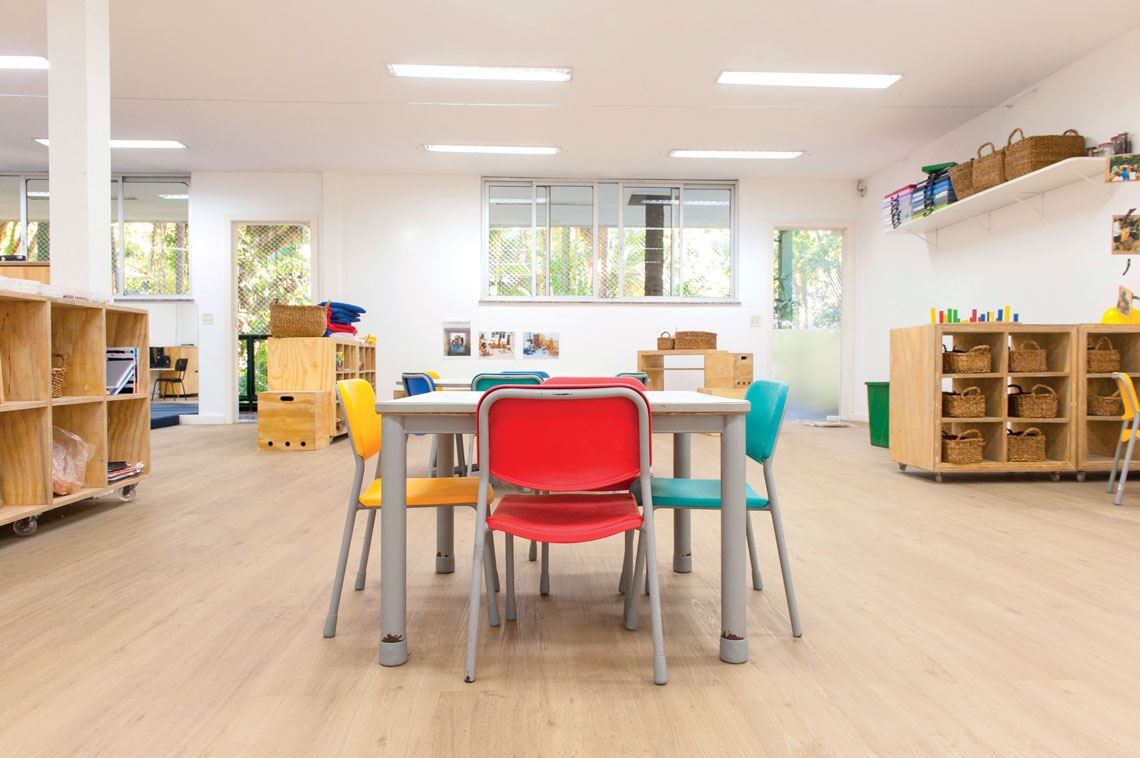
Léo Ramos Chaves
Preschools and kindergartens will face challenges getting children to follow health guidelinesLéo Ramos ChavesAt the end of June, the government of São Paulo announced that it intends to start returning to in-person classes across the state, from preschool to high school, beginning September 8. Schools are to operate at 35% of their maximum capacity, combining the use of online classes with rotating student groups in shifts. However, for the return to classrooms to happen effectively, it’s necessary for all cities in the state to be in Phase 3 of the economic easing plan—known as the São Paulo Plan—for at least 28 days. The recovery strategy provides for gradually opening schools in three stages. School systems will have the autonomy to decide which age group will return first. In the state of São Paulo there are 13.3 million students enrolled in public and private institutions.
In higher education, in-person classes were postponed in June, after the Ministry of Education extended its authorization for school activities to take place online, listing new criteria that should be adopted for internships and lab practicums. In the wake of the new guidelines the Federal University of Rio de Janeiro (UFRJ) announced that there will not be a full return to in-person classes this year. The University of São Paulo (USP) also announced that the undergraduate and graduate classes on campuses will resume only in 2021. At the end of June, João Carlos Salles, president of the Brazilian Association of Directors of Federal Institutions of Higher Education (ANDIFES) and dean of the Federal University of Bahia (UFBA), announced that federal colleges and universities are conducting a detailed survey on the investment needed to adapt their physical classroom spaces, acquire technological resources, and train teachers to work with remote teaching techniques. “Universities will have to resume in-person classes after other school systems, partly because they require people to move around the country,” he says.
Scientific article
HUBER, S. G. e HELM, C. COVID-19 and schooling: evaluation, assessment and accountability in times of crises—reacting quickly to explore key issues for policy, practice and research with the school barometer. Educational Assessment, Evaluation and Accountability. pp. 1–34. June 10, 2020.
Reports
CAMPOS, M. M. et al. Para um retorno à escola e à creche que respeite os direitos fundamentais de crianças, famílias e educadores (Reopening schools and daycares such that the fundamental rights of children, families, and teachers are respected). May 2020.
Educação escolar em tempos de pandemia na visão de professoras/es da Educação Básica (Schooling during a pandemic from the perspective of elementary school teachers). Carlos Chagas Foundation – Educational Research Department. June 2020.
O retorno às aulas presenciais no contexto da pandemia da Covid-19. Contribuições do Todos Pela Educação para Qualificar o Debate Público e Apoiar os Gestores Frente ao Futuro Processo de Reabertura das Escolas. (The reopening of schools during the COVID-19 pandemic. Contributions from Todos pela Educação to the public debate and in support of school administrators in the process of planning the reopening of schools.) Todos pela Educação. May 2020.
